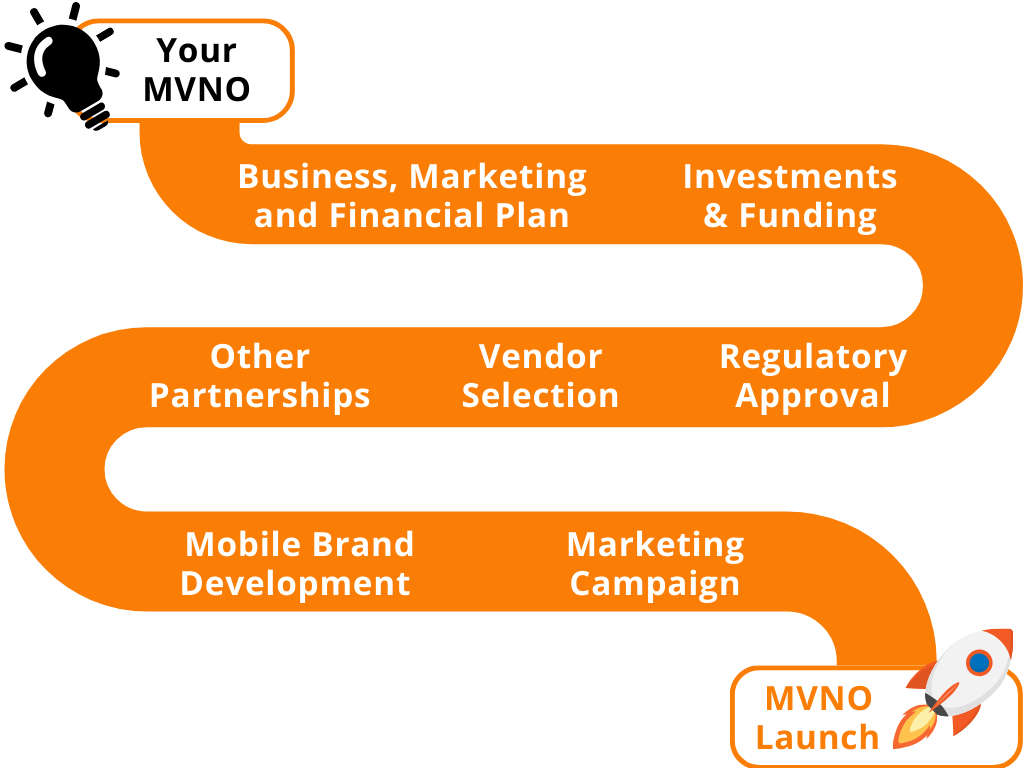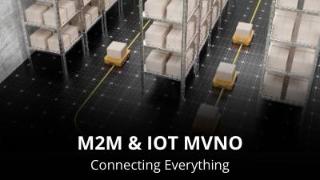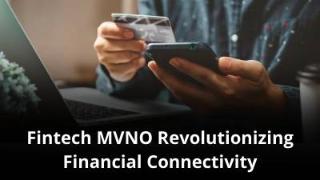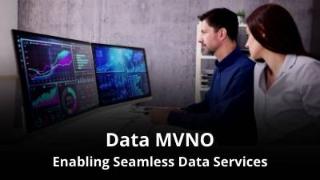Introduction about starting a Utilities MVNO (Mobile Brand)
A Utilities MVNO/IOT provides mobile services tailored to the unique needs of utility companies and their customers. By offering connectivity solutions for smart meters, grid management, and field workforce communication, starting a Utilities MVNO play a crucial role in modernizing utility services.
What do you need to know about starting a Utilities MVNO/IOT
- What are the advantages and disadvantages ?
- What are the Revenue sources and Pricing strategy?
- What are suitable segments?
- What kind of Mobile bundles are typically used?
- What kind of ARPU can you expect?
- What is the Go-to-Market Strategy?
- What are some points to think of for the Marketing Plan?
- What kind of financing is to be expected?
- What kind of MVNO type is typically used?
- What is the expected time for the launch?
- What is the expected impact of 5G?
- What is the expected impact of eSIM?
- IOT and its Relation to Utilities MVNOs
- Benefits of Launching Utilities MVNO/IOT
- Frequently Asked Questions
- Summary
What are the Advantages and Disadvantages of a Utilities MVNOs/IOT
Advantages: Utilities MVNOs can enhance operational efficiency for utility companies through reliable communication and data services. They can offer specialized plans that integrate with smart grids and IoT devices.
Disadvantages: The initial setup and integration with existing utility infrastructure can be complex and costly. Ensuring network reliability and security is crucial, given the critical nature of utility services.
What are the Revenue Sources and Pricing Strategy
Revenue Sources: Subscription fees for smart meter connectivity, IoT device data plans, and premium services for real-time grid management.
Pricing Strategy: Competitive pricing for basic services with tiered pricing for advanced data analytics and real-time monitoring services.
What are suitable segments for Utilities MVNO/IOT?
- Utility Companies: Providing communication solutions for grid management and smart meters.
- Municipalities: Offering connectivity for public utilities and infrastructure.
- Smart Home Providers: Integrating mobile services with smart home energy management systems.
- Industrial Clients: Facilitating connectivity for large-scale energy management and monitoring.
- Renewable Energy Providers: Enabling efficient monitoring and management of solar and wind farms.
- Water Management Services: Offering real-time monitoring and control of water supply systems.
- Gas Companies: Providing communication solutions for gas pipeline monitoring and leak detection.
- Electric Vehicle (EV) Charging Networks: Ensuring connectivity for managing and monitoring EV charging stations.
- Environmental Monitoring Agencies: Facilitating data collection and communication for pollution and resource monitoring.
- Agricultural Services: Enhancing precision agriculture through connectivity for irrigation systems, weather stations, and crop monitoring tools.

What kind of Mobile bundles are typically used for Utilities MVNOs
Data: High demand for smart meters, IoT devices, and real-time data analytics.
Voice: Essential for field workforce communication and emergency response.
SMS: Used for alerts, notifications, and status updates.
What kind of ARPU can you expect for a Healthcare MVNO?
ARPU: Moderate to high.
Why: Utilities MVNOs offer specialized and high-value services that utility companies and industrial clients are willing to invest in.
Where It Is Based On: ARPU is driven by the need for reliable and continuous data transmission for utility management and smart grid operations.
You need to work out the details in your Financial Plan.

What is the Go-to-Market Strategy for a Healthcare MVNO/IOT?

Developing partnerships with utility companies and municipalities is key. Highlight the operational efficiencies and cost savings that come with reliable connectivity solutions.
Target Audience: Utility companies, municipalities, and industrial clients.
Pricing Strategy: Competitive pricing with flexible plans tailored to specific utility needs.
Distribution Channels: Direct partnerships, industry events, and trade shows.
Promotion: Industry-focused marketing, case studies, and demonstration projects.
Customer Support: Dedicated support teams with expertise in utility operations.
What are points to think of for the Marketing Plan for a Utilities MVNO?
Emphasize the benefits of real-time monitoring and efficient grid management, collaborate with smart home and industrial clients, and promote sustainability and cost-efficiency to attract utility companies and municipalities. You need to work out below points in your Marketing Plan.
USP:
Reliable connectivity solutions tailored for utility management.
Content Creation:
Case studies, whitepapers, and industry reports showcasing the benefits.
Promotions:
Pilot programs and introductory offers for new clients.
Partnerships:
Collaborations with technology providers and industry associations.
Feedback Loop:
Regular engagement with clients to refine services and address challenges.

What kind of financing is to be expected for Utilities MVNOs?

Financing: High
Due to the need for robust infrastructure and integration with utility systems. Initial investment is crucial for technological development and regulatory compliance.
You need to work the details in your Financial Plan.
What kind of MVNO type is typically used for Utilities MVNOs?
MVNO Type: Thick MVNO or Light MVNO
A Utilities MVNO is a thick or light MVNO, relying on existing network infrastructure from Mobile Network Operators (MNOs) or MVNE for quick and cost-effective launches. This allows them to offer tailored communication services to utility companies and their customers, swiftly entering the utilities sector.
See also: Different types of MVNOs

What is the expected time to launch for Utilities MVNOs?

Expected Time to Launch: 9-18 months
Utilities MVNOs, specializing in providing communication services for utility companies and their customers, can leverage existing infrastructure to expedite the launch process. The main focus lies in devising effective marketing strategies and acquiring customers within the utilities sector.
To expedite the launch process, consider implementing a targeted strategy. For example, focus on utilizing pre-existing solutions offered by Mobile Network Operators (MNOs), integrate their existing packages (bundles), and make use of their customer support services. Swift market entry is achieved by simplifying services and tariff structures tailored to the needs of utility companies and their clientele.
What is the expected impact of 5G for Utilities MVNOs?
5G technology will significantly enhance the capabilities of Utilities MVNOs by providing faster and more reliable data transmission, crucial for real-time monitoring and management of utility services. For more details see the Mobile Network section.

What is the expected impact of eSIM for Utilities MVNOs?
IOT and its Relation to Utilities MVNOs
Utilities MVNOs, focused on providing connectivity and data services to utility companies, can leverage IoT to revolutionize utility operations, improve efficiency, and enhance customer service. While the original text focused on entertainment and fan engagement, Utilities MVNOs can utilize IoT for entirely different, utility-focused applications. Here’s how:
Enhanced Customer Service and Communication: IoT can improve customer service by providing real-time information about outages, service disruptions, and billing information. Utility companies can use this data to proactively communicate with customers and provide timely updates. Smart home devices can also allow customers to monitor their own energy usage and make informed decisions about energy conservation.
Smart Metering and Grid Management: Instead of tracking fan activity, IoT-enabled smart meters can collect real-time data on energy consumption, water usage, and gas flow. This data can be used to optimize grid management, improve forecasting accuracy, and detect anomalies or outages. Utilities MVNOs provide the essential connectivity for these smart meters to transmit data reliably and securely.
Distribution Automation and Fault Detection: IoT sensors deployed throughout the utility grid can monitor the condition of equipment, detect faults, and automate distribution processes. For example, sensors on power lines can detect outages and automatically reroute power to minimize disruptions. This improves grid reliability and reduces downtime.
Demand Response and Energy Efficiency: IoT can facilitate demand response programs by allowing utility companies to communicate with smart thermostats and other connected devices in customers’ homes. This enables them to incentivize customers to reduce energy consumption during peak demand periods, improving grid stability and reducing energy costs.
Remote Monitoring and Control of Infrastructure: IoT enables remote monitoring and control of critical utility infrastructure, such as substations, pipelines, and water treatment plants. This allows utility companies to proactively identify and address potential problems, improving efficiency and preventing costly repairs.
Predictive Maintenance and Asset Management: IoT sensors can monitor the condition of utility assets, such as transformers, pumps, and pipelines, and predict potential failures before they occur. This allows utility companies to schedule maintenance proactively, reducing downtime and extending the lifespan of their assets.
Security and Cybersecurity: Given the critical nature of utility infrastructure, security and cybersecurity are paramount. Utilities MVNOs must provide secure and reliable connectivity for IoT devices, ensuring that data is protected and that the grid is not vulnerable to cyberattacks.
By integrating IoT data and services into their offerings, Utilities MVNOs become essential partners for utility companies, enabling them to modernize their operations, improve efficiency, and enhance customer service. They differentiate themselves by providing specialized connectivity solutions tailored to the unique needs of the utilities sector.
Benefits of Launching Utilities MVNO/IOT
Efficient Grid Management and Optimization: Offer connectivity solutions for smart meters and grid sensors, enabling real-time data collection and analysis for optimized grid management. Thus, this leads to improved grid stability, reduced energy waste, and better management of peak demand periods, benefiting both utility companies and consumers.
New Revenue Streams through Smart Home Integration: Offer bundled packages that integrate utility services with smart home devices, such as smart thermostats and energy management systems. Consequently, this allows customers to better manage their energy consumption and potentially generate new revenue streams for utility companies through demand response programs.
Enhanced Outage Management and Customer Communication: Provide real-time outage detection and communication tools, allowing utility companies to quickly identify and address power outages and keep customers informed. As a result, this minimizes downtime, improves customer satisfaction, and enhances the overall reliability of utility services.
Data-Driven Insights for Predictive Maintenance: Leverage data from connected devices to predict equipment failures and schedule maintenance proactively. This, therefore, reduces costly repairs, extends the lifespan of utility assets, and improves the overall efficiency of maintenance operations.
Smart Grid Management with IoT Sensors: Deploy a network of IoT sensors throughout the grid to monitor energy flow, detect faults, and optimize distribution.
Connected Home Energy Management Systems: Offer connectivity for smart home energy management systems that allow customers to control their energy consumption and reduce their utility bills
Frequently Asked Questions
How can a Utilities MVNO effectively integrate with existing utility infrastructure?
By partnering with technology providers and leveraging robust integration solutions to ensure seamless connectivity and data transmission.
What strategies can a Utilities MVNO employ to attract utility companies and municipalities?
Focusing on cost savings, operational efficiencies, and enhanced service reliability through targeted marketing and demonstration projects.
What financial considerations are involved in launching a Utilities MVNO?
Significant investment in technology, infrastructure, and regulatory compliance, with a focus on long-term partnerships and scalable solutions.
How can a Utilities MVNO capitalize on emerging technologies like 5G and eSIM?
Leveraging the enhanced capabilities of 5G for real-time data transmission and utilizing eSIM for efficient device management and activation.
What strategies can Utilities MVNOs employ to ensure long-term sustainability and profitability?
Continuous innovation, strong partnerships, and a focus on delivering high-value services tailored to the specific needs of utility companies and industrial clients.
Summary
Utilities MVNOs play a pivotal role in modernizing utility services through specialized mobile connectivity solutions. By integrating with smart grids, IoT devices, and utility infrastructure, they enhance operational efficiencies and provide reliable data and communication services essential for utility management. Successful launch and operation require significant investment, strategic partnerships, and leveraging emerging technologies like 5G and eSIM.



















